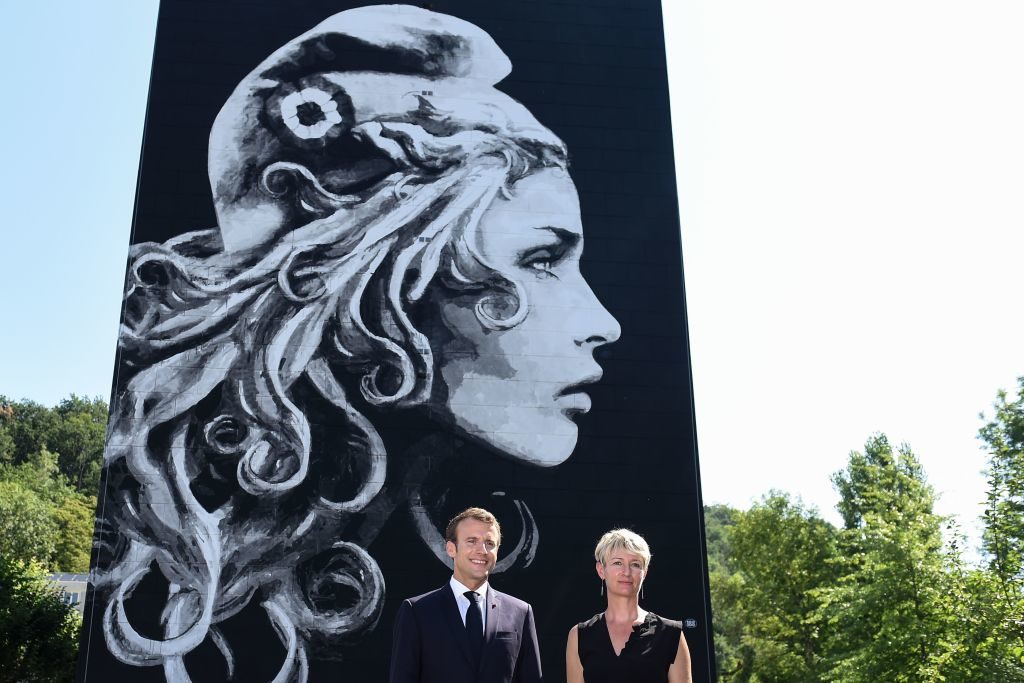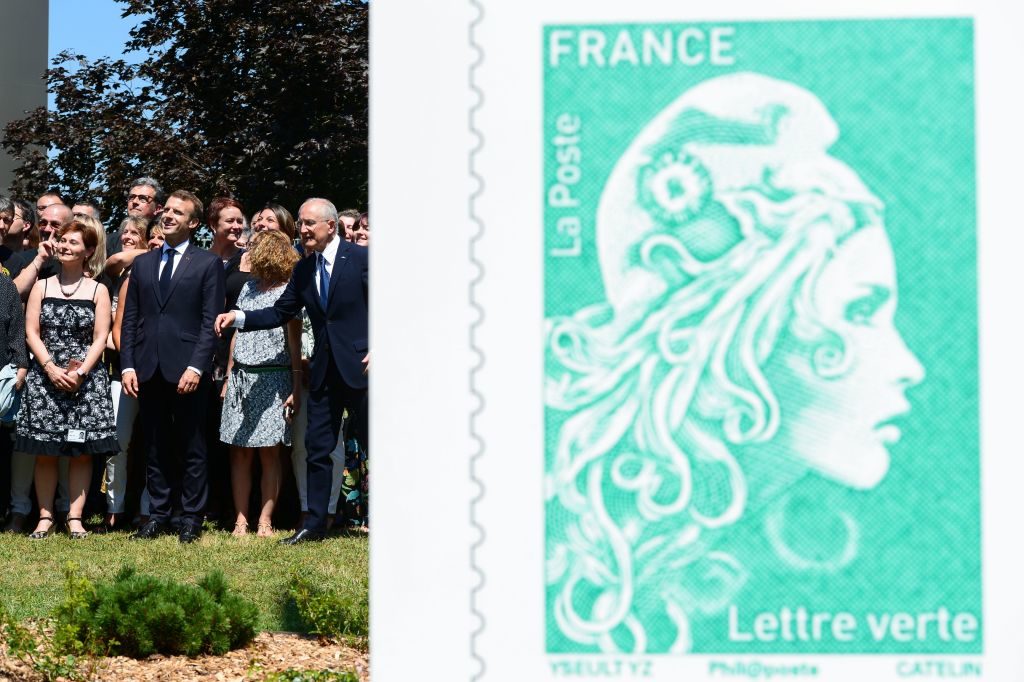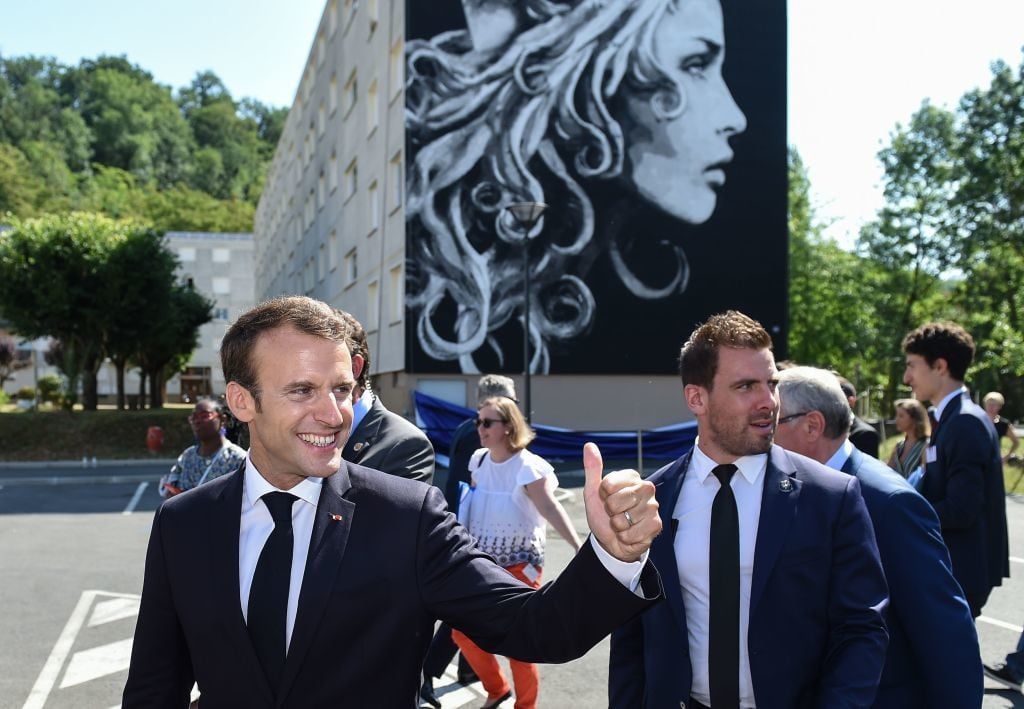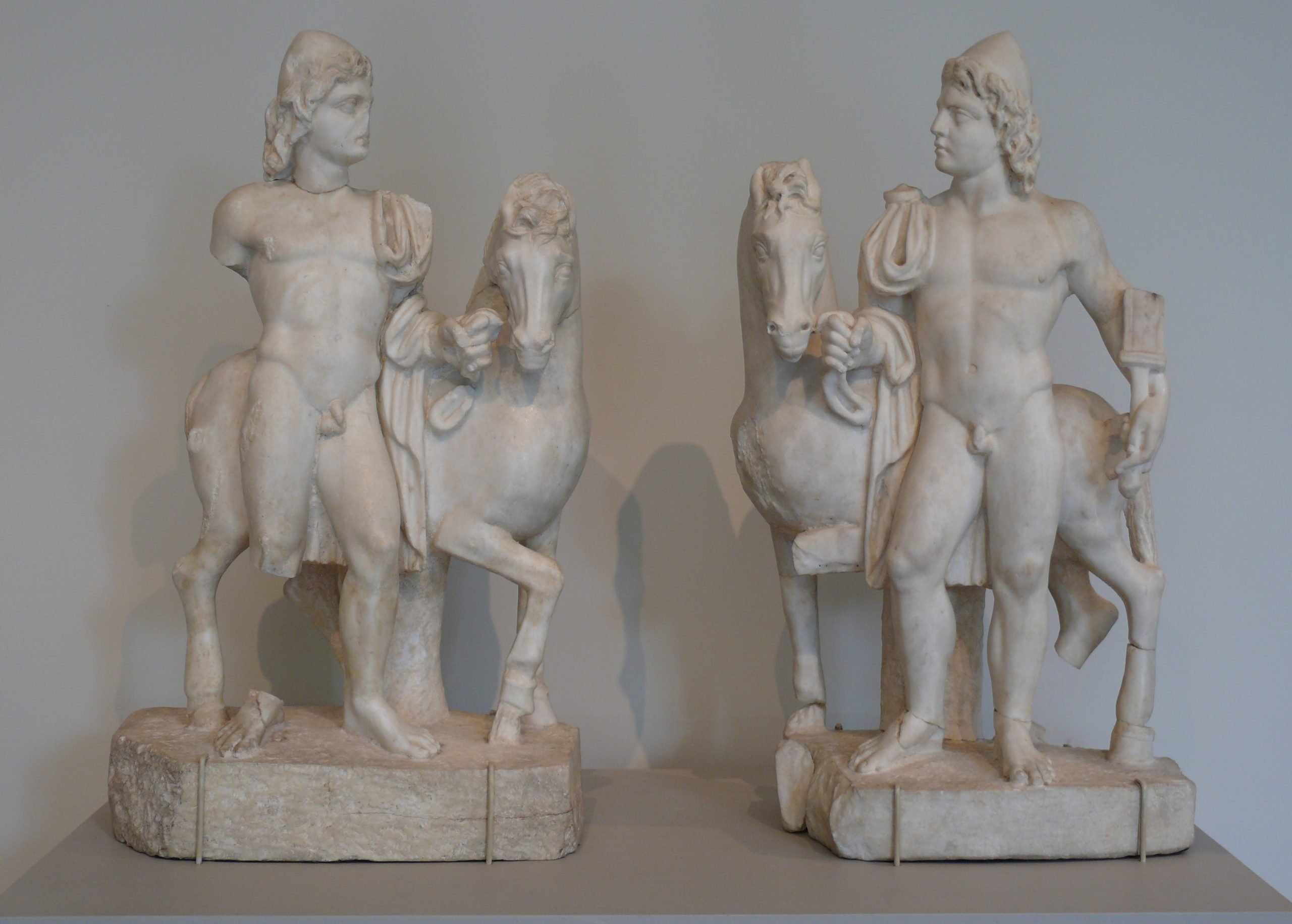French President Emmanuel Macron has enlisted a street artist to create a new image of Marianne, the symbol of liberty and the de facto face of France, which appears on the country’s postage stamps. Over 300 million stamps with the new image have already been printed, and they will be released on Monday.
Presidents usually choose an image that captures something of the contemporary zeitgeist, and Macron has named the new Marianne by French-British street artist Yseult Digan, Marianne l’engagé, meaning Marianne the engaged, or the politically committed.
Digan, who is based in the West African city of Abidjan and goes by the moniker YZ (pronounced “eyes”) has created a portrait of a young woman with a glint of determination in her eye. “I wanted this Marianne to be strong, proud, and determined, with an unflinching look to the future,” Digan said at the unveiling of the image. The work appears on a 50-foot mural on the side of a public housing estate in Périgeux, a well-populated town in southwestern France a few miles from the factory of La Poste where the stamps are made.

French President Emmanuel Macron and French-British street artist Yseult Digan aka YZ pose during the inauguration of the mural painting depicting French national symbol “Marianne” designed and painted by YZ, in the district of Bas-Toulon in Périgueux on July 19, 2018. Photo by Nicolas Tucat/AFP/Getty Images.
“I chose street art because I don’t think it has to be an academic art that resembles the most official or authorized art, that has to represent what the republic is,” Macron said in a speech at the unveiling (translated by artnet News). “The republic belongs to everyone. It is shared.”
Marianne has been a symbol of the French republic since 1792. She has been immortalized numerous times throughout art history, notably in Eugène Delacroix’s famous 1830 painting Liberty Leading the People. In more recent history, selecting a representation of Marianne for the national postage stamp has become a political tradition for incoming presidents, with this being the 30th depiction of Marianne to appear in the form.

French President Emmanuel Macron poses at the end of the inauguration of the newly printed stamps with French national symbol “Marianne” designed by French-British street artist Yseult Digan aka YZ, in Boulazac, southwestern France, on July 19, 2018. Photo by Nicolas Tucat/AFP/Getty Images.
Brigitte Bardot and Catherine Deneuve are among the film stars chosen to be Marianne in the past. The New York-born French journalist Anne Sinclair, who is an heir to Picasso’s dealer, Paul Rosenberg, is another past model for Marianne’s statue.
Digan’s Marianne is wearing a Phrygian cap, or liberty cap, a reference to the French Revolution. In his speech, Macron referred not to the cap but to Marianne’s free-flowing hair, which may have raised some eyebrows given the French state’s ban on wearing religious head coverings in public spaces.
Previous presidents have also made controversial choices for their Mariannes. Nicolas Sarkozy’s choice vaunted the European Union, and François Hollande chose a Marianne modeled after Inna Shevchenko, who founded the FEMEN protest movement in Russia and Ukraine.
Ahead of the unveiling of the new Marianne, Shevchenko penned a blog for the French edition of HuffPost summarizing the period she adorned the stamp as one of social transformation in France, including both the legalization of gay marriage and a rise of nationalism and the extreme right. She writes that she hopes the new Marianne “could insist on republican values while xenophobia and communalism, on the other hand, divide society,” adding that “perhaps today’s Marianne could symbolize the new French Revolution, the feminist revolution, Me Too?”
Follow Artnet News on Facebook:
Want to stay ahead of the art world? Subscribe to our newsletter to get the breaking news, eye-opening interviews, and incisive critical takes that drive the conversation forward.










